Text
Hi Austin! You know David Kelley is right, creativity does lie within anyone and everyone. It’s up to us to tap into that creativity and produce something from there. It can definitely be hard to tap into that part of yourself, but I found out over this past semester that when I’m put under pressure, I actually produce good work. So, at first it can be pressuring, but when you’re put on the spot like that, you’ll produce stuff you never thought you could. It’s great what Kelley’s doing for his clients though, helping them to dive in deeper into their potential creative selves. I also like the other quote you mentioned by Kelley, “you can move forward faster if you take a look back.” To me, that’s such a strong statement because it’s absolutely true. After taking the classes we took this past semester, it definitely made me realize how important the creative process is and how extremely crucial it is to always reference back to your notes and concepts. So, if that’s one thing I learned about these classes, then it’s that: to trust yourself and the process.
Human–Centered Design
When researching human centered design and the thought of creative origination, I came across David Kelley’s belief that creativity lies within anyone and everyone. Kelley is the founder of IDEO, a community of designers, entrepreneurs, engineers, teachers, researchers, and more. In his younger years, he went to a psychologist (Dr. Bandura) at Stanford where he discovered the thought process behind phobias and the confidence to overcome them. Bandura presented a concept to Kelley known as “self–efficacy”: “the belief in one’s capabilities to organize and execute the courses of action required to manage prospective situations.“ In other words, self–efficacy is a person’s belief in his or her ability to succeed in a particular situation. Bandura described these beliefs as determinants of how people think, behave, and feel.
For wanting to work in a creative environment surrounded by people he liked, Kelley created IDEO, and made a commitment to making great things happen in the world. His passion is to “help unlock creative confidence in everyone from students to business executives.” He is a jack-of-all-trades; he received his masters in engineering as well as product design, and was awarded an honorary recognition that “distinguishes contribution to design education.”
After reading articles about Kelley and his accomplishments, his ideas about design thinking and human-centered design cannot go unnoticed. His communities of designers in multiple places around the world focus on helping their clients and partners at the individual, organizational, and societal level. They assist clients by building their creative capacity and ability to grow, adapt, and routinely innovate. Human–centered design is a large contributor to the process of innovative advancements in our modern world, and a quote from IDEO’s website that draws my attention is that “you can move forward faster if you take a look back.” Meaning, we advance in the design world by looking back at previous concepts and constantly push the idea that they can always be evolved into something better than before.
As humans, we always want more, or the next big thing—this is where the designers come into play and reflect on whether something needs to be revisited. As the technology of the modern world continues to be ever-advancing, human needs seem to accelerate. Therefore, complex problems are best solved collaboratively. “Even as our methods evolve in response to new, complex challenges, we’re always designing solutions for people first. We’re building to learn, and learning as we build, through inspiration, ideation, collaboration and implementation.” Nevertheless, we must not forget how important the past is helping us shape the intention for the future.
Kelley, David, and Tom Kelley. “Creative Confidence.” IDEO Is a Global Design and Innovation Company., Oct. 2013, www.ideo.com/post/creative-confidence.
Tillman, Ashley, and Chelsea Takamine. “Open Reflections: Looking Back on a Year of Impact.” OpenIDEO, 2017, www.openideo.com/content/open-reflections-2017.
Cherry, Kendra. “How Self Efficacy Helps You Achieve Your Goals.” Verywell Mind, Verywell Mind, 7 Oct. 2019, www.verywellmind.com/what-is-self-efficacy-2795954.
IDEO. “About IDEO.” Our Story, Who We Are, How We Work, 2019, www.ideo.com/about.
7 notes
·
View notes
Text
Hi Angela! After reading your take on design thinking, I couldn’t agree more! I’ve never really gotten the chance to work with other artists before until I came to Texas State. It’s so nice having those few extra helping hands and critiques from other people. They really help you to open your eyes to how others see your work from different point of views. I know without you or the other people in our classes, I couldn’t have gotten through our classes or done near as well as I thought I did! I think as a whole class, we really showed what a great design team is. When we met in small groups and/or all together, we did well at giving helpful criticism to each other’s works. I think we were all able to take something away and learn something new from working in groups. I know I especially did!
Design Thinking- Is there a specific way to do it?
I did some research on a book called Design Thinking: Understand, Improve, Apply, and I found some interesting assertions in the chapter called The Co-evolution of Theory and Practice in Design Thinking. I discovered that there are many experts on the field of “design thinking” that do not approach the actual subject of design thinking in the same manner. There are many differing expert opinions on design thinking methods, and in the way to implement design thinking in the process of creating new innovations that benefit the users of the product or design. I will attempt to dissect some of the differing approaches, as well as highlight the commonalities between them.
In one example, when some experts on design thinking were interviewed for the book, there were widely varying opinions on whether innovative design work should be outsourced or not. For many of these experts, it was held truth that they should try to collaborate outside of their respective field in order to avoid getting “trapped” in their own methods and routines of design thinking. They argued that creative thinking should be expanded beyond the specific field, so the development of original design ideas should be done by an outside designer(s). However, there were other opinions that an integrative “in-house” approach was more beneficial, and that the designated team (comprised of representatives from different departments) could oversee the creative process from beginning to end stages. This approach is where the collaborative team from fields within the business would be responsible/oversee their respective steps in the design process like research, ideation, and implementation, etc.
Although there are many differing opinions in the leading experts in the field of “design thinking,” there are some common themes that they mostly agree upon. One commonality that most design thinkers agree upon is the benefit of the diversity of disciplines within the design team. It is important to have many different leaders in any collaborative team in order to keep the ideas and innovation flowing. Another one of these commonalities is the idea of focusing on “user needs” as the central focus of designer innovation.
A great design team should not just try to come up with a solution to the first obvious problem, but they should be trying to identify and improve the issue that is at the heart of the users problem. By rethinking or “reframing” the initial design challenge, they can begin to understand what the users actual needs are. Once this is identified, the team can approach the design challenge and apply the problem within their chosen design procedure. This procedure should include many different methods, both unusual and common. Finally, by keeping an open dialogue with the user, the solution will eventually come to fruition.
Since taking part of some of the communication design classes at Texas State University, I have come to understand the vast importance of collaboration with others in the field of design. When creating a unique design solution to an issue (professional or otherwise) it is SO important and helpful to have outside influence and opinions in the refining process. Regardless of the “expert” opinions of the “right way” to be involved with/or direct the creative and design thinking process, the importance of collaboration is paramount.
Plattner, Hasso, et al. Design Thinking: Understand, Improve, Apply. Springer, 2011.
6 notes
·
View notes
Text
Hi Naim! I really liked the quote you had mentioned by David Fastuca. I agree that good design does indeed require people to believe in the possibility and to think in the abstract. As an artist, we have to be versatile. Sure, we can stick with using a specific design style and process, but we need to be able to do whatever task we are given, no matter how the goal is met. I think that’s what a lot of artists struggle with; not being able to bend themselves into working with different prompts, like the ones we had to do for our classes. I know I struggle somewhat with this, especially for some of the projects we had to do in our classes. It definitely required me to think way outside the box, but in the end, everything came together and I was really surprised with what I could come up with.
Design Thinking
Everywhere we look we see all these products that companies come to produce, these products start with a lot of key steps; involving orientation, analysis, conception, and implementation. Some important design questions to apply to a design concept or solution is the who? What? When? Where? and Why? Design thinking is a problem-solving process that can identify gaps within the marketplace or any other environment that needs problem solving.
As David fastuca said “good design requires people to believe in possibility and to think in the abstract” which I do agree with, no matter how ridiculous and idea may sound it can always be the possibility that it may turn into a great outcome. The work that it involves is challenging because we must look at all possible outcomes and flaws that may appear during the analysis and implementation phase. We also need to remember that during the ideation process we shouldn’t be critiquing our own work since ideas and sketches are being jot down to get more quantity over quality during this stage. The next step would be sharing or ideas and rough sketches with others to compare and discuss the best solutions that will work and decide how we can narrow it down all into one concept. Zen Master Shunryu Suzuki said “in the beginner’s mind there are many possibilities, in the expert’s mind there are few.” This phrase does a good job in reminding us to keep our minds full of all sorts of ideas and possibilities because as we become experts, we tend to narrow down the possibilities of a design, depending on the client’s needs.
The difference between business thinking and design thinking is that design thinking is a more intimate, collaborative, empathetic, and visual process; while business thinking is derived from a stakeholder point of view. As described by David Fastuca “design thinking uses observational techniques to uncover problems and issues that people haven’t picked up on”, and by being able to pick up on these topics we can solve the solution to any design. By knowing what kind of audience, a business is targeting, it helps narrow down the specifics of what the product will be, also thinking in how it will be received by others. It all comes down to how we can come up with a solution that can meet the customer’s needs while making it easier for them to use in a simplified way.
The final step in finalizing a design is implementation, which aligns with a comp; the process in developing a detailed representation of a design concept thoughtfully visually and composed. It may include either a printed piece or mock-up/dummy which refers to a three-dimensional piece. This is also the stage where the client/designer review happens and most often than not, they may request certain changes to the piece. After the discussion phase, we as designers go back and add changes to the piece so, in the end we have a finished product or solution in which the client envisioned from the beginning.
Citation Source:
Locomote Technologies Trading Pty Ltd. “Corporate Travel Management.” Locomote, David Fastuca, https://www.locomote.com/.
Jacobi, Margaret. “DESIGN THINKING: Even Experts Need a Beginners Mind.” Essential Design - Blog, News & Events, 29 May 2019, http://blog.essentialdesign.com/design-thinking-why-experts-always-need-a-beginners-mind.
Landa, Robin. Graphic Design Solutions. Cengage, 2019.
2 notes
·
View notes
Text
Hi Mallory! I really enjoyed your take on Creative Thinking. What you wrote about in the Illumination stage, actually makes sense. The ‘Eureka’ moment has to be one of the best feelings as an artist. Once you finally understand the prompt and have everything down for it, the feeling of relief is like no other. Having a Eureka moment especially in our classes was literally the best feelings for me because I personally struggled with a few of the project’s prompts. The last project we had in Imaging—the typography poster—was one of those projects. It’s like something wasn’t clicking and it took me so long to finally understand it. Nonetheless, I did indeed have my Eureka moment and turned in what was probably one of the best projects I had done in that class!
Creative Thinking
“You can’t wait for inspiration. You have to go after it with a club.”
-Jack London, American Novelist
How does a creative person arrive at a “Eureka!” moment? Are some people just more in tune with the right side, the creative side, of their brain than others? Are we supposed to wait around until inspiration strikes? According to psychologist Scott Barry Kaufman, scientific director of The Imagination Institute in the Positive Psychology Center at the University of Pennsylvania, the neuroscience behind the creative process is much more complicated and is largely comprised of four basic stages which engage both the creative right side and analytical left side of the brain. The four stages of the creative thinking process are as follows: preparation, incubation, illumination, and verification.
Preparation is square one of the creative thinking process, it begins by identifying a problem, a specific need, or an otherwise area where a solution is needed. In this phase, you must focus on collecting as much information and doing as much research as possible. Immerse yourself in the subject. This will serve as the foundation and planning stage by which the additional three phases are built on, so being as thorough here as possible is advisable. Ultimately, this is the phase where you are putting every observation and idea on paper, nothing is too silly to be off limits.
Once you have a gained a thorough understanding of the subject and sufficient research has been completed, the incubation phase will begin. In this phase, the information you have gathered will spend some time in your subconscious allowing you to form more complex opinions and create new connections with the subject matter. Use this time to look over all the information gathered and begin narrowing it down while also remaining open to forming new thoughts. Allow your subconscious mind to digest and consider everything you’ve learned, this is often the stage by which creative ideas strike, often unexpectedly. The incubation period can be short or it can be long.
Eureka! Sometime during the incubation period, when all of the information is circulating through your subconscious, you’ll finally have an light bulb moment. This phase is appropriately named the illumination stage, this critical moment generally appears very suddenly and is normally accompanied by a feeling of certainty. You will feel as if a missing puzzle has been put into place. This finally brings us to the the final stage of the creative thinking process, called verification, in which you will test and evaluate your idea to determine if it will work. If it works, you must polish and refine the idea as well as figure out how to appropriately package the idea so the message comes across to your audience. In some cases, an idea may not work out, and the creative process must begin anew.
The creative process, just like everything else, is something that requires practice before you can become skilled at it. There is not an exact formula behind being creative, but this process can provide a tried and true framework to generate and refine creative ideas. Use this as a general approach to creative problem solving, and over time, tweak it to better serve your specific needs.
Works Cited
Sharp, Callum. “The 5 stages of the creative process.” The Writing Cooperative, Nov. 2019, https://writingcooperative.com/the-5-stages-of-the-creative-process-4f8037b7119f
“Creative Thinking Process” The Peak Performance Center, Nov. 2019, http://thepeakperformancecenter.com/educational-learning/thinking/types-of-thinking-2/creative-thinking-process/
Stillman, Jessica. “The 4 Stages of Creativity” Inc.com, Nov. 2019, https://www.inc.com/jessica-stillman/the-4-stages-of-creativity.html
6 notes
·
View notes
Text
Project 4: Vernacular Typography Poster
Creating this poster was a challenge for me in the beginning. I didn't really have a plan for this project, everything sort of together in the end. I had first taken pictures in Austin; areas surrounding the University of Texas and 6th Street. I took pictures mainly of neon signs and marquee readerboards. Needing more pictures, I had done the same thing in San Marcos, staying mostly in The Square. At this point, I knew I wanted to incorporate neon lights in all my compositions; that was going to be my theme. After creating about seven compositions, I had finally chosen one that best fit the criteria of the project. Finding the hierarchy was the hardest part of the whole project for me, I actually started from scratch and made a completely new composition, which is why I ended up with seven comps. The one I had chosen has a striking red neon sign as the hierarchy. It also makes up the poster’s texture. The surrounding typography are of the marquee lettering. All the typefaces have a warm tone to them so they’d look cohesive with each other. The visual weight seems balanced, my eye is able to travel from one spot to another in a satisfying way. I wanted to focus on Austin’s and San Marcos’s nightlife in order to bring out each city’s personalities and why they’re such populous cities.

3 notes
·
View notes
Text
Project 3: Opposing Forces
For this project, the idea came to me rather quickly. The topic I chose to focus on was ‘joy/sorrow,’ and the concept I decided to go with was animal cruelty, more specifically: animal testing. It’s exciting and fun to get new makeup products for our own personal use, however, it’s unfortunate for the animals that are used as test subjects under the hands of certain makeup companies. Not every company tests on animals, but many popular brands do use animals as test subjects and many people don’t know it. I wanted the hamster to look like it’s being restrained in some way, uncomfortable, like it’s being forced to stay in place. That’s why I edited it to where the hamster is overexposed, like someone took a super close picture of it with the flash on, whereas the background is dark. The visual weight I think is much better compared to the first critique. I made the hamster more centered to make it look more unified in the frame, and I showed more of the hands just to emphasize the hamster’s being restrained.



1 note
·
View note
Text
Human-Centered Design
Human-centered design, from what I have researched, is “another creative approach to problem-solving that starts with people and ends with innovative solutions tailored to meet their needs.” It is basically how and what you think, and then what you can produce from those thoughts. From the source I found, Design Kit, they say that the process consists of 3 phases: inspiration, ideation, and implementation. In the first phase, inspiration, you will gather as much information as you can directly from your client or the people you are designing for while digging deep into their lives in order to meet their creative needs. In the second phase, ideation, you will begin to understand what you have learned, curate possible designs/roughs, and prototype potential solutions. In the third phase, implementation, you will make the final product, bringing it to life, and up for market. The way you would know if your final product is a success or not, is if you were able to adhere to every need and detail as requested by your client and were diligent and patient throughout the entire process.
This process seems very logical to me. It is a step-by-step guide to how you should go about every project that requires the creative process, especially if you are dealing with a client with a specific vision and already has detailed ideas of what they want. It is especially helpful that this process is broken down into 3 phases. I have used this process of design before without even knowing it. I have had a few friends come to me in the past requesting that I help them out with a certain project of theirs. Of course, I would oblige and help them out in any way I could. In fact, a friend of mine just recently asked if I could help him out with a logo design for him and his friend’s latest short film. Not going to lie, it is hard trying to maintain your creativeness while also adhering the requests of your clients. I had to make several designs before my friend was finally satisfied with a logo he liked, and there is still a few things I have to tweak since it was only a “prototype.” So, in the end, it is definitely a great learning process, especially for me since this is basically what I want to do as my career. From now on, when I have “clients” ask for my help with any project that requires creative assistance, I will think about these 3 phases and make sure they leave 100% satisfied.
6 notes
·
View notes
Text
Design Thinking
From what I have read about design thinking, it is the process in which businesses take in order to solve a problem for a specific project, and then from there, they choose the best and strongest solution. Design thinking is definitely a smart strategy and a part of the creative process. In one of the articles that I read, a quote that caught my attention by Mike Joyce, said that “design thinking has the power to change the way you approach problem-solving by always referencing the ‘why.’ Why are we doing this? You learn to question you assumptions every step of the way.” I strongly agree with this statement. In my opinion, it is good that you question things because you are recognizing it as a potential issue that you would like to fix and thinking about the different affects and variables of what the outcome would be. It is also a good way to stay organized with your thoughts. For example, when I begin a new project or simply just my homework, I sometimes have to force myself to sit down and ask myself “what’s the most important thing I need to do first?” or “what’s due soon?” This helps me to destress and to efficiently work on my homework accordingly. In another article I had read, it continued to explain what design thinking was: “Design thinking is a shorthand that the business world has adopted to describe the combination of creativity and pragmatism that a design mindset brings to the development of new products and services,” followed by, “design thinking is a toolbox of resources and methods that teams can use to systematically recognize opportunities and solve problems they’ve never seen before…it is an intimate process—collaborative, empathetic, visual, iterative—where user insights and epiphanies become the DNA of new or improved experiences.”
Design thinking, I have come to learn, is an extremely crucial part of any creative process. It is true when they say to “trust the process” because that is what leads up to your final product. It is also true when they said it is an “intimate process.” I think the most challenging part for me personally is the design process/creative process. Normally, I am the type of person who just thinks of an idea, go with it, and hope the turnout is good, and I honestly end up with the results I was expecting. However, this only happens on special occasions. Until I became a Communication Design major, I did not always take the design process seriously. Though at the time I was originally a Studio Art major, I was never really taught how much the importance of the design process is emphasized in the art field. However, I feel like the more I use design thinking, the better artist I become. I am learning how to do projects the right way in order to get the best results. It has not been easy trying to “trust the process” and not just “go with the flow,” but little, by little, I feel like I’m getting the hang of it and learning just how important design thinking really is.
6 notes
·
View notes
Text
Project 2: Letterforms and Objects
Doing this project was fairly easy I feel like. I enjoyed doing the thumbnail sketches to see what cool and unique ideas I could come up with for my letterforms, which were “L” and “B,” both capital letters. For the “L” my strongest design was the llama, which was honestly my favorite one. I created the llama in Serif font, Baskerville to be exact. I used the top brackets for the snout and ears of the llama and the bottom brackets for the front legs. The stem I used for its neck and the rest of the “L” made up its body. Deciding the colors for the second “L” was a little tricky just because I could do so much, but in the end everything worked out and I decided to go with the a medium, dark brown fro the body and a much paler color for the face and small slit of its underside. Then to add a pop of color, I gave it rosy cheeks. For the “B” my strongest design was the bicycle. I created the bicycle in San Serif font, Gill Sans to be exact. I mostly used the stem to create the “body” of the bike and then used the tires to make the bowls of the “B.” Honestly, I had already envisioned a red bike, so I just went with it and added a few highlights to make it pop out, and I think it turned out really nice.



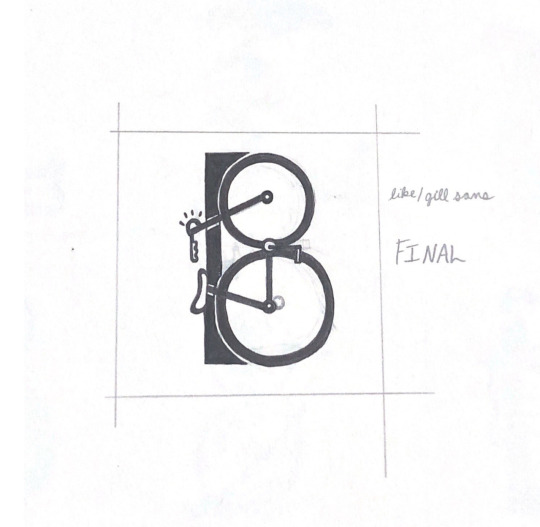






0 notes
Text
Daily Vocabulary

肛门 [ gāng mén ] = anus 改善 [ gǎi shàn ] = to improve ( a part ) 进步 [ jìn bù ] = to improve ( as a whole ) 针对 [ zhēn duì ] = to pick on 交流 [ jiāo liú ] = to exchange ( non material ) 交换 [ jiāo huàn ] = to exchange ( material ) 预言 [ yù yán ] = prophecy 语言 [ yǔ yán ] = language 困难 [ kùn nan ] = difficulty 开心 [ kāi xīn ] = happy ( short term ) 快乐 [ kuài lè ] = happy ( long term ) 小三 [ xiǎo sān ] = mistress 拉屎 [ lā shǐ ] = to sh*t 水饺 [ shuǐ jiǎo ] = boild dumplings 抑制 [ yì zhì ] = suppress 暗示 [ àn shì ] = to hint 按时 [ àn shí ] = on time 过时 [ guò shí ] = out of date 同情 [ tóng qíng ] = sympathy 背景 [ bèi jǐng ] = background 彩色 [ cǎi sè ] = multicolor 出柜 [ chū guì ] = to come out of closet 出轨 [ chū guǐ ] = to cheat on 脆弱 [ cuì ruò ] = fragil, weak ( person ) 易碎 [ yì suì ] = fragil, weak ( object ) 神童 [ shén tóng ] = child prodigy
110 notes
·
View notes
Photo
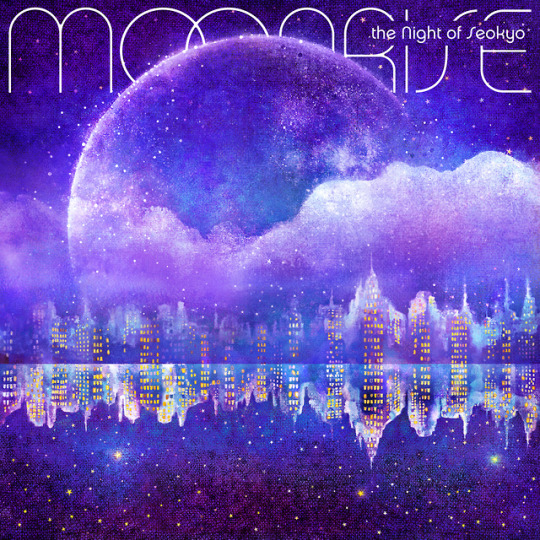

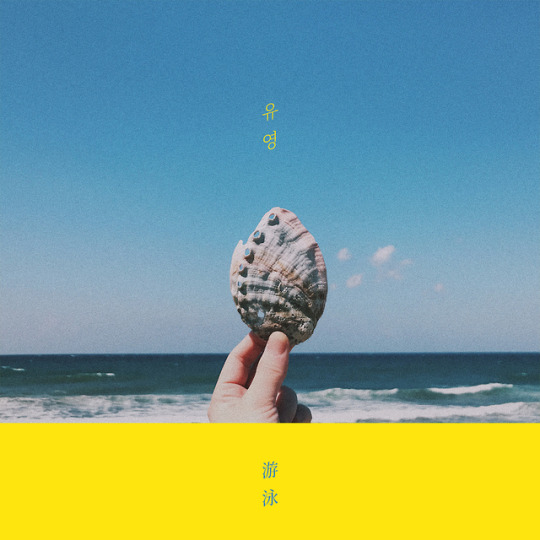



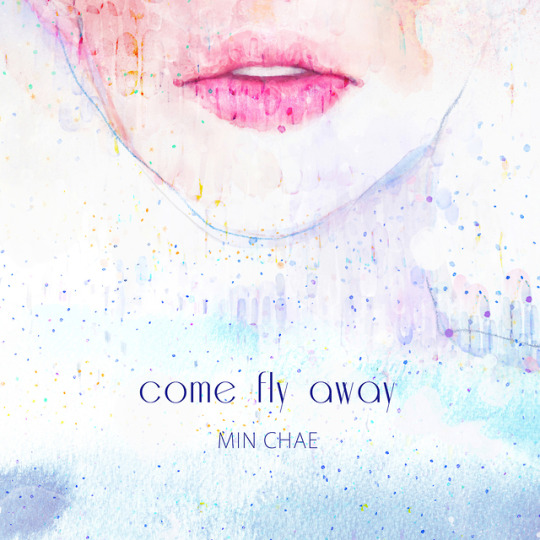

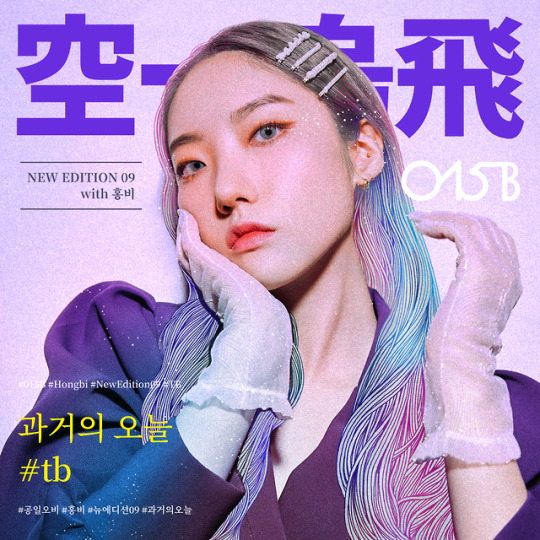
Artworks & Designs by Hajin Bae for album covers
3K notes
·
View notes
Photo

Artwork Copyright © Tyler Spangler
Buy prints here: society6.com/tylerspangler
244 notes
·
View notes
Photo

Artwork Copyright © Tyler Spangler
Buy prints here: society6.com/tylerspangler
285 notes
·
View notes
Photo

Artwork Copyright © Tyler Spangler
Buy prints here: society6.com/tylerspangler
163 notes
·
View notes


